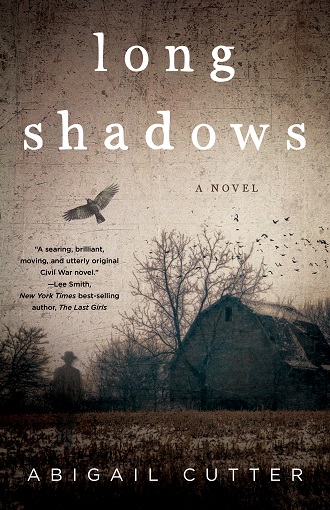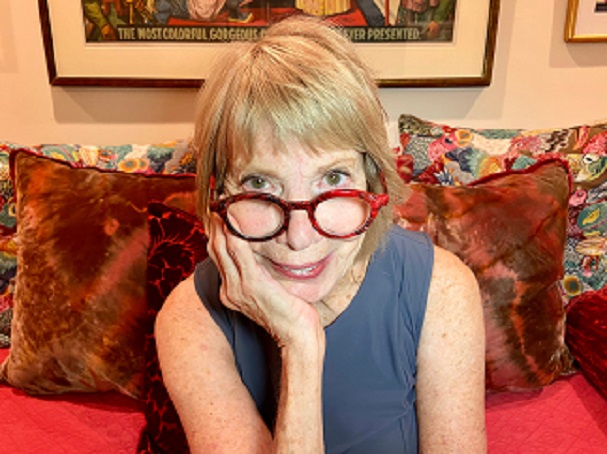I felt like I was flying while writing, then revised, revised, and revised. But that was also fun.
Abigail Cutter – 13 July 2022
The Back Flap
Tom Smiley signed up as a private in the Confederate army when he was eighteen and quickly came to regret it. Spending the last year of the war in a Union prison scarred him so deeply that even death hasn’t brought freedom from its memory. A ghost in his deserted childhood home, he can’t forget the bloody war and its meaningless losses, or shed his revulsion for his role in the Confederate defense of slavery. But when a young couple moves in and makes his home their own in the early 21st century, trouble erupts—and Tom is forced to not only face his own terrible secret but also come to grips with his family’s hidden wartime history. He finds an unexpected ally in his house’s new owner, Phoebe Hunter, who is both fascinated and frightened by his ghostly presence—and whose discoveries will have momentous consequences for them both.
About the book
When did I start writing the book?
The novel-project began because I wanted to get rid of a no-nonsense, very angry, and loud ghost that became active in our 19th century Virginia farmhouse whenever we changed anything. The place has been in my husband’s family since 1854, through nearby Civil War battles, and into the 1960’s when the last great-aunt died, and it was no longer inhabited. We inherited it packed with everything anyone had every brought to it. But when we renovated to make it ready for a weekend retreat, all hell broke loose. Doors slammed for long periods, objects moved of their own accord, and something stomped up and down the stairs. I wanted to get to the root of why we had this unwelcome visitor and in the process of my research, found I was writing a novel. This was more than ten years ago.
How long did it take you to write it?
Off and on at first, several years. But then it caught fire, and I worked on it every day, all day, for seven years.
Where did you get the idea from?
There was a trove of family letters between teenaged Tom Smiley and his sister Mary while he was a Confederate foot soldier that were seeds for the book, but then I relied heavily on the non-fiction In the Presence of Mine Enemies: The Civil War in the Heart of America by Bancroft winner Edward Ayers and his database, The Valley of the Shadow, with letters and diaries from 1855 to 1870. Most of the documents were from the county where the farm is located.
What came easily?
Letting my unconscious mind run free after two years of research. I felt like I was flying while writing, then revised, revised, and revised. But that was also fun. Revision is like untangling a skein of yarn, pulling out detail after small detail until you have lots of strands you can use. And I had no problem cutting material that I suddenly didn’t need.
Are your characters entirely fictitious or have you borrowed from the real world people you know?
My central character, Tom Smiley, is a composite of many young Confederate soldiers in Ayers’ database. His sister Mary is strongly based on the quirky, brave, and vibrant young woman that comes across in her real letters. And as an historical novel, it includes many real-life characters from the 19th century that are not central but make an appearance.
Are there any particular authors that have influenced how you write, and if so, how have they influenced you?
I’ve read everything Anthony Doer (All the Light We Cannot See and Cloud Cuckoo Land) has written at least five times with pen in hand, underlining his beautiful, lyrical language. My character Phoebe is drawn from The Hunter’s Wife in his collection of short stories, The Shell Collector. And I’m so impressed by Frank Norris’ poetic language in The Sweetness of Water. Finally, the British author, Robert McFarlane, writes such eloquent descriptions of the natural world in his non-fiction Underland that he has been an inspiration too.
About Writing
Do you have a writing process? If so, how do you describe it?
Because I’m writing historical fiction, research plays a huge role. I read as much as I can find about a period, taking notes as I go. Then I try to forget my wonder at what I’ve discovered and let the compulsion to tell others fall into the background of my writing. At this point, I just write, letting everything come out without a censor. The longest part of the process is then revision, revision, and revision and is what I love most.
Do you outline?
I don’t outline, but let the story unfold. Midway, I stop to compose a short synopsis of where the story is headed—once the characters are developed and have their own voice. John McFee once advised students to write a letter never mailed, telling your mother what the book is about. This process gives me direction. I also write a page for each character as background. I may never use everything I’ve written about them, but it rounds them out for me.
Do you edit as you go or wait until you are finished?
I drive in my car a lot and that’s the time I think about ways to enhance or improve what I’ve written. Then I call myself on the phone and leave a voice mail so I won’t forget. I also read and reread as I go along and edit the pages most recently completed. Then I edit after I think I’m finished, often finding I’m not. A few days away from the book is also helpful for seeing it all in a fresh light, then editing some more.
Did you hire a professional editor?
Several! And my husband read my book nine times and provided suggestions. He’s an avid reader and had great comments. And then I hired three professional editors over the 8 years it took me to complete Long Shadows. And finally hired a sensitivity reader whose comments really enriched my book and helped me see from a perspective I hadn’t been able to imagine.
Do you listen to music when you write?
No, I like to become as immersed in the process as possible without any distraction, even from voices in the other room.
About Publishing
Did you submit your work to Agents?
Yes, to a very well-known New York agent who really believed in my book, even offering it as an exclusive to a big publisher in the beginning. But he could never sell it and wasn’t willing to try smaller presses that required an agent’s presentation of the manuscript.
What made you go to Indie? Was it a particular event or a gradual process?
I turned to one of my professional editors, a former senior editor at Simon Schuster, who recommended She Writes Press, an Indie award-winning publisher and selective about the 30 or so books they publish a year. They had the reputation I wanted, so that’s the publisher I approached.
Did you get you book cover done professionally or do it yourself?
Professionally.
Do you have a marketing plan for your book or just winging it?
I’ve hired a public relations firm that is promoting the book through on-line sites, blogs, and print media.
Any advice you’d like to give to other newbies considering becoming Indie authors?
Find a publisher that provides lots of support through the editing and publication process. She Writes Press gives its authors an inch-thick guidebook and conducts webinars for their writers. I would have been lost without their guidance. Enter as many competitions for Indie books as possible once your book is out there. Finally, hire a PR firm. I would never have guessed all the on-line possibilities for public relations.
End of Interview:
For more from Abigail Cutter, visit her website and follow her Facebook page.


